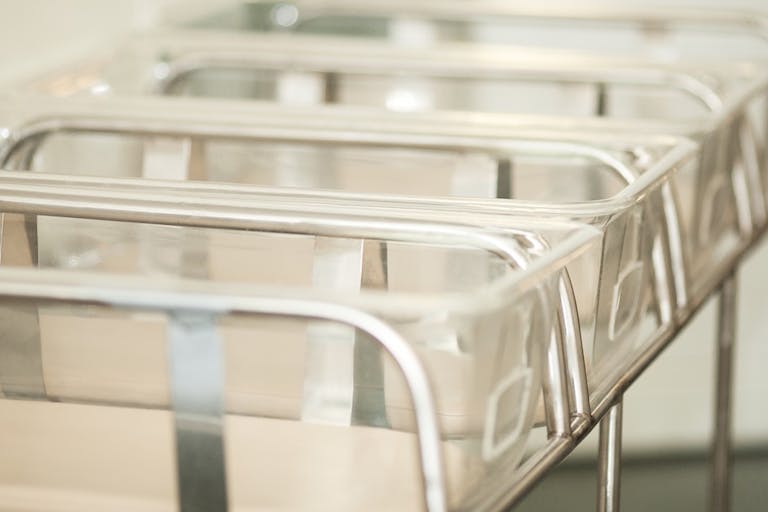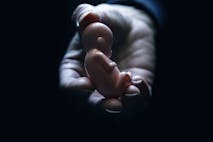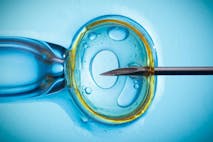
Man convicted of trafficking stolen body parts sentenced to six years in prison
Cassy Cooke
·
Abortion advocates inexplicably blame pro-life laws for Poland’s plummeting birth rate
Poland’s birth rate has decreased by a shocking 40% over the last 30 years, and it has been in a rapid state of decline since 1950. Despite the lengthiness of the trend, abortion advocates are blaming the nation’s three-year-old pro-life law for the decline.
In 2020, Poland’s Constitutional Tribunal changed the law to prohibit certain abortions that had long been permissible. While abortion had been allowed for cases in which the mother’s life was at risk, in rape and incest, and cases of prenatal diagnosis, it would no longer be allowed for babies who received a diagnosis in the womb. A study by United Surveys found that 52% of respondents believed the law change has somehow played a role in women’s decision not to have children and in the continued decline of the birth rate.
The declining birth rate
Data shows that in 1950, Poland’s birth rate was 31.228 births per 1,000 women. In 2003, the birth rate hit a low of 9.405 births per 1,000 women before bouncing up to 10.502 in 2008. In 2022 — two years after the prohibition of discriminatory, eugenic abortions — the rate was down again to 9.442 and it currently sits at 9.154, a decline of 1.55% from 2022 to 2023 (which is preliminary data) — far from the largest drop the birth rate in Poland has seen.
That large decline was likely due to the introduction of birth control in the 1960s when the birth rate fell to 16.52 in 1968, nearly half of what it was in 1950. Abortion, meanwhile, had been legal for any reason through the 50s, 60s, 70s, and 80s until 1993 when the law changed to protect the majority of preborn children. At that point, the birth rate dropped more before leveling out and remaining in the 9-10 births per 1,000 women range.
Yet, in a piece for The Washington Post, European Affairs Columnist Lee Hockstader argues that births in Poland “have plummeted since the country imposed the draconian prohibition…” He explained that in the year ending in September, “the number of babies delivered in Poland fell by 11 percent compared with the previous year, a staggering decline.”
Data shows that in 2022, Poland welcomed 305,600 babies compared to 331,500 babies the year before. There was a definite decline (7.8%) and state statistical agency GUS reports that from January 2023 through September 2023, the number of births was 25,000 lower than in the same period in 2022. Yet the pro-life “draconian prohibition” is likely not to blame, as the data shows the downward sliding birth rate is a decades-long trend.
Hockstader even admits that multiple factors have contributed to the decline — including housing shortages, lack of access to child care, the war in the Ukraine, and job insecurity. Yet Hockstader argues that women aren’t getting pregnant because they won’t have the option of aborting their baby if that baby is diagnosed with a health condition.
The idea that women would decide not to have children out of fear that their child would receive a diagnosis and they wouldn’t be able to kill him or her is dangerous ableism.

Targeting children for abortion
Hockstader argues that without the ability to kill their disabled child through a eugenic abortion, women have decided not to get pregnant at all rather than risk becoming the mother of a child with a health condition. If true, it’s heartbreaking. If untrue, then reporting that it is true gives credence to the false and discriminatory idea it’s acceptable and expected that women abort babies who have a perceived health condition or disability rather than provide that baby with adequate health care.
Article continues below
Dear Reader,
In 2026, Live Action is heading straight where the battle is fiercest: college campuses.
We have a bold initiative to establish 100 Live Action campus chapters within the next year, and your partnership will make it a success!
Your support today will help train and equip young leaders, bring Live Action’s educational content into academic environments, host on-campus events and debates, and empower students to challenge the pro-abortion status quo with truth and compassion.
Invest in pro-life grassroots outreach and cultural formation with your DOUBLED year-end gift!
This would confirm that prenatal screening is being used to target children with health conditions for death by abortion. This discriminatory act of killing offers no benefit to the parents. Studies show that abortion is not the best option in such a situation — even with a condition determined to be life-limiting or fatal.
Women who undergo an abortion for their babies due to a poor prenatal diagnosis are at an increased risk of emotional distress than those who carry their babies to term. According to Perinatal Hospice and Palliative Care, which provides resources for parents who are facing such a diagnosis, significant research shows that women who have an abortion following a fetal diagnosis suffer “physical and emotional pain, with psychosocial and reproductive consequences.”
Another study found that women who do undergo an abortion due to a fetal diagnosis “ultimately felt as if they were betraying themselves and their children.”
Women who carried to term, however, were able to find closure and peace. The Journal of Clinical Ethics reported that 97.5% of parents who chose to carry to term rather than abort did not regret the decision. “Parents valued the baby as a part of their family and had opportunities to love, hold, meet, and cherish their child.”
Is no child better than a disabled child?
Media outlets turned to Agnieszka Szpila, a writer, activist, and mother to two “severely” disabled children, who told them, “Women are extremely afraid of being stuck in my situation. The only person a (disabled) child can rely on is the mother. Not the society, nor the country, nor the system.” She added, “Until my children are 18, they have school. But then, they don’t have school. They will be sitting with me until the end of their lives. I can’t live my life in the way I imagined.”
It’s a heartbreaking quote, but it doesn’t point to the need for abortion — it points to the need for better resources for families of children with disabilities. Parents of children with disabilities and health conditions deserve respite services as well as care options that will most benefit their unique family and children.
It is unethical to kill a child rather than provide them with proper care and to allow abortion to become a mother’s ‘only’ foreseeable choice for her disabled child.
It is likewise cruel to insinuate that women are incapable of wanting, caring for, or loving a disabled child and that they would choose not to have any children rather than risk having a disabled child.
Live Action News is pro-life news and commentary from a pro-life perspective.
Contact editor@liveaction.org for questions, corrections, or if you are seeking permission to reprint any Live Action News content.
Guest Articles: To submit a guest article to Live Action News, email editor@liveaction.org with an attached Word document of 800-1000 words. Please also attach any photos relevant to your submission if applicable. If your submission is accepted for publication, you will be notified within three weeks. Guest articles are not compensated (see our Open License Agreement). Thank you for your interest in Live Action News!

Cassy Cooke
·
Analysis
Cassy Cooke
·
Analysis
Cassy Cooke
·
Analysis
Cassy Cooke
·
Analysis
Nancy Flanders
·
International
Angeline Tan
·
Politics
Nancy Flanders
·
Human Interest
Nancy Flanders
·
Human Interest
Nancy Flanders
·
Analysis
Nancy Flanders
·
Politics
Nancy Flanders
·